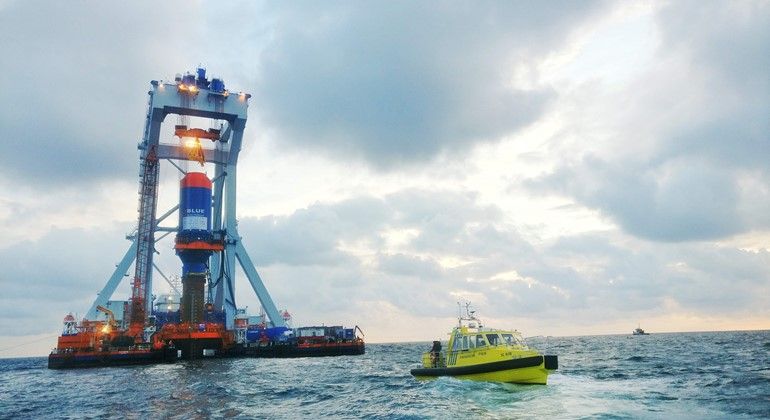Offshore wind ‘hammer’ will reduce costs…and noise
An innovation in the offshore wind industry could help further drive down costs, and protect wildlife during construction.

An innovation in the offshore wind industry could help further drive down costs, and protect wildlife during construction.
Wind turbines which sit on the sea floor first need deep foundations to ensure they stay upright. The most prevalent technique, called ‘piling’, uses a drill to bore into the seabed to a depth of up to 30 metres.
This method can be problematic as it creates noise which is potentially disturbing to nearby wildlife and coastal communities.
However, a new device has been created which can reduce noise by up to 20 decibels. The ‘Blue Hammer’ was successfully tested earlier this month off the coast of the Netherlands.
The prototype works by using a large water tank to deliver a more energetic, but quieter blow to the seafloor. Along with less noise, the new technique reduces wear and tear to the foundation and cuts the amount of time at sea, which, in turn, reduces costs.
The project is being developed by The Carbon Trust and engineering company Fistuca as part of a long-term innovation programme in the offshore wind sector. Major developers in the industry, such as E.ON, SSE and Ørsted, are backing the scheme.
Michael Stephenson, project manager for the Carbon Trust, said: “The test is another step forward in the Blue pilot project and we are excited to see the results of the offshore measurements and help further bring this essential innovation to the offshore wind market.”
Jasper Winkes, found of Fistuca BV, commented on the test: “It was great to see the hard work of many years finally delivering these good results on a full scale. We are very grateful for the endorsement of our investor Huisman Equipment, the Dutch Government and all the BLUE PILOT Project partners that made this possible.”
Photo Credit: Carbon Trust
